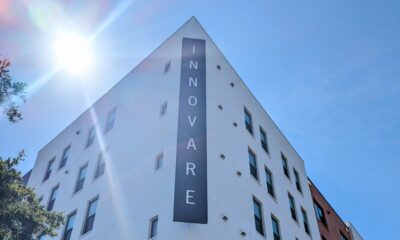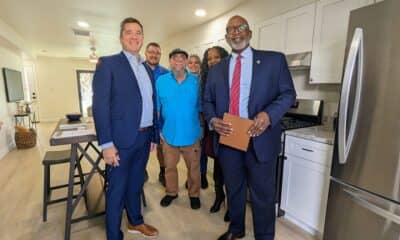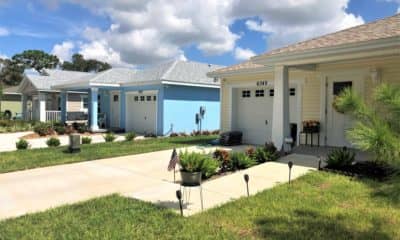Thrive
Pinellas superintendent, development leaders address growing pains
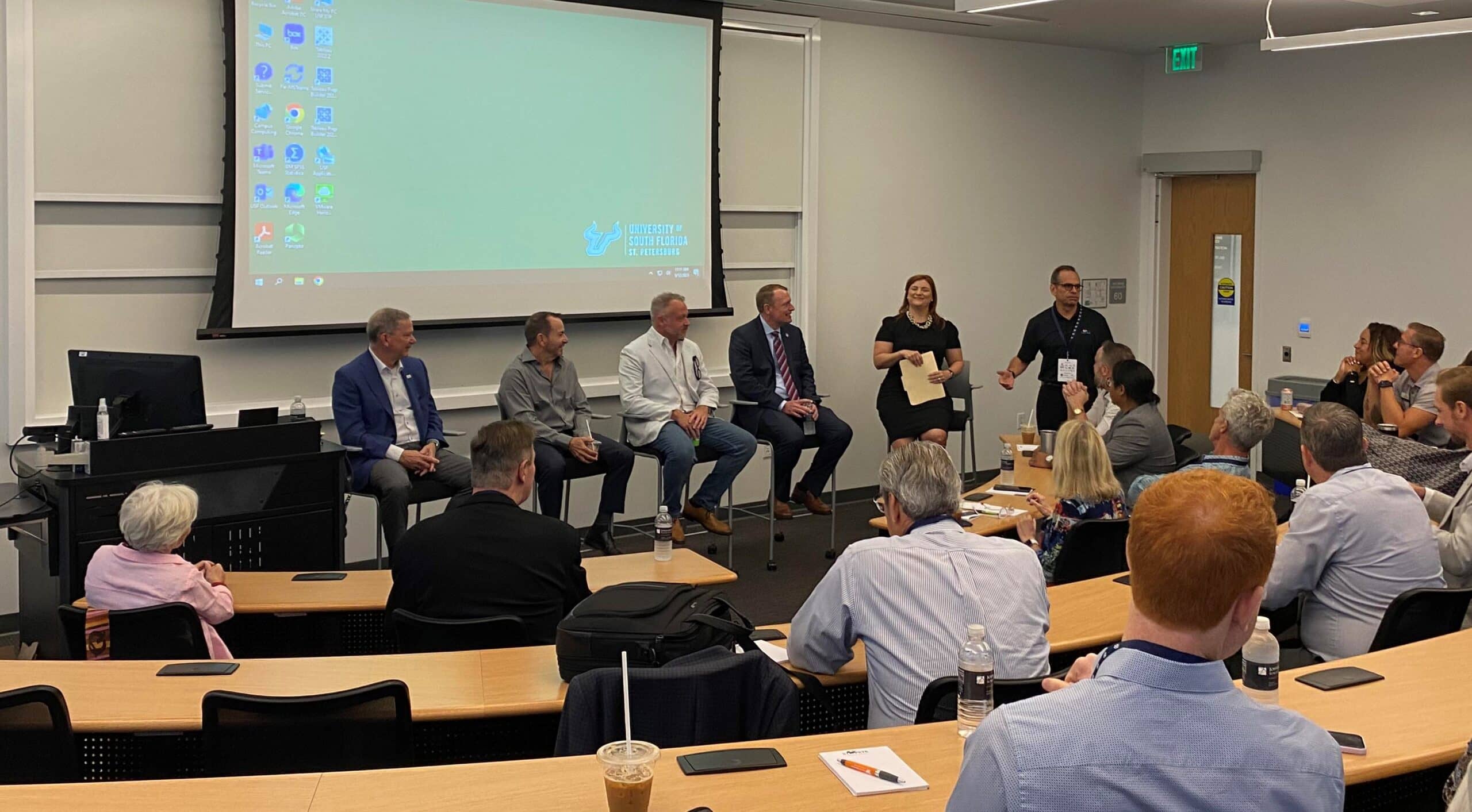
Part 1 in a series detailing the panels and discussions held May 12 during the Inside St. Pete event.
Economic development leaders and stakeholders in the city are combatting St. Pete’s housing challenges with creative solutions and new intentional policies.
The Key Issues on St. Pete panel kicked off the Leadership St. Pete Alumni Association and St. Petersburg Area Chamber of Commerce’s Inside St. Pete event May 12 at the University of South Florida St. Petersburg campus. The day-long event is meant to serve as a community orientation for business executives and St. Pete newcomers who are eager to establish civic relationships and dive into the inner workings of the city.
The panelists for the first roundtable discussion included St. Petersburg Councilmember Brandi Gabbard (who also served as moderator), Pinellas County Schools Superintendent Kevin Hendrick, St. Petersburg Downtown Partnership CEO Jason Mathis, J Square Developers President Jay Miller, and Whit Blanton, executive director of Forward Pinellas.
The leaders addressed how the city could leverage existing real estate and other opportunities to meet workforce and housing demands. The responses have been edited for clarity.
On the missing links to achieve affordability
Blanton: We are the planning agency for the entire county, and we have a land use responsibility. Eight years ago, we merged the Pinellas Planning Council with the Metropolitan Planning Organization (MPO), which means our transportation and housing policies go hand-in-hand. With the lack of housing affordability, workers are increasingly moving to Pasco or Hernando counties, and they now have longer commutes to work and are adding congestion to constrained roads and bridges. My agency has the authority to set countywide plans that all 25 governments have to be consistent with. You can’t force them to do anything, but you can incentivize it. St. Pete has been at the forefront of increasing density to allow higher density in major corridors – Gateway and U.S. Highway 19 – places that have large employers. We need to think about employees aging out of their roles and we need to find housing to support that new workforce in those corridors.
Miller: When you get away from our waterfront neighborhoods and go toward the center of the city, we see small one-bedroom, two-bathroom homes that are 60 to 70 years old and were always modestly priced as our service-dependent economy limited people’s wages, but we’ve seen dramatic growth in the past 10 to 15 years. A long time ago, the city decided to encourage development downtown by using density to attract developers and it worked. We’ve seen tremendous high-density, mid- and high-rise construction, but that’s the most expensive way to build new housing instead of building single-family homes. Inflation for materials has also caused prices to escalate. More affluent people are attracted to the new construction and amenities. Since the pandemic, many folks moved here, taking their high-paying jobs in New York and California with them, allowing them to afford higher-priced homes. Downtown has set a benchmark for even more modest homes. People who were traditionally middle income – our teachers and first responders – who can’t afford this big jump. The chamber has been working with city administration to promote the development of low and middle-income housing. There’s a disconnect between affordability and the construction costs.
On the demands of the school system
Hendrick: Pinellas County Schools is the largest employer in the county. We have 13,000 employees, including 7,000 teachers. One way we are integrating business needs and teaching career skills is through the Pinellas school choice model, we’ve had it for decades and have over 80 application programs that are career-themed. We have asked manufacturers and others to serve on our advisory board and give us information so our curriculum is relevant and the students can have job shadowing opportunities. We also have the Pinellas Education Foundation, one of the largest foundations which is housed in Largo and has financial literacy programs. We also operate two technical colleges in the county. We have students duel-enrolled in those programs that can be anywhere from four to six weeks, and some programs go over a year. Recently, in the request for proposals for the redevelopment of Tropicana Field/Gas Plant District, the development groups asked about the school system and if we could help students get trained in construction because development teams need more construction workers for the project, which will take decades to fully build out.
Gabbard: This past year, we started an employee-assisted housing program for city employees to have rental stipends. Simultaneously, we are doing financial literacy for them so when the program ends, they can buy a house.
On adaptive reuse to solve the housing crisis
Hendrick: At one point, years ago, we had a peak of 115,000 students. The number has slowly declined for a couple of reasons, one being that the birthrate has been lowered as people aren’t having as many children. We looked at how we can repurpose old school buildings we do not need. On Mirror Lake, there’s the Tomlinson Adult Education Center that was used as an adult education facility where we offered different skill training programs. I moved to St. Petersburg 17 years ago, and I wouldn’t even run past Tomlinson. It is desolated and isolated. We are looking to take the Tomlinson building and make it into housing. We released an RFP and received four bids.
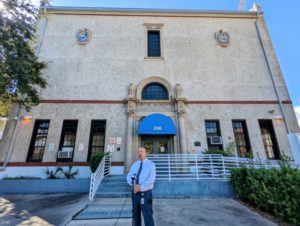
Clint Herbic, associate superintendent for Pinellas County Schools, leads a tour of the former Tomlinson Adult Education Center in November 2022. Photo by Mark Parker.
Mathis: Additional housing is really the only way we are going to solve this problem. The newly passed NTM-1 zoning (which allows density increases on nearly 3,000 properties) will be helpful. I remember going to the city council hearing to speak in support of it, and I heard some crazy stories from people who were saying untruthful things about the zoning. There’s a lot of concern about what will happen to neighborhoods – some of the concerns are real and some are not. One of the things we need to do is have data to make decisions. Last year, we put together a website that features data on the housing inventory. Providing good data is one of the ways the private sector can help the city.
Miller: Land is very expensive, which promotes high housing costs, so we are thinking of ways to access less expensive land and the challenge is finding larger parcels because a lot of the city is zoned for single-family use. We are talking with policyholders about repurposing obsolete properties. Those could include houses of worship that have large excess properties and are struggling financially. Another option is repurposing shopping centers, which could be rezoned for multifamily housing.
Gabbard: We are creating a city-owned land policy. The city is a large landowner. We have developers offering to buy our properties and develop them. We are currently inventorying our land to understand everything we own and apply housing-first policies. If we can find ways to make land more affordable and subsidize it, I think we can move the needle. I know everyone wants to live downtown, but that’s not possible.


